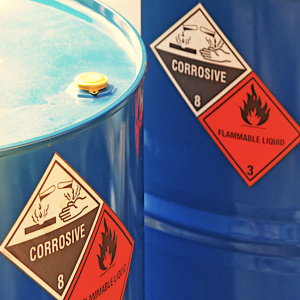Want to experience the greatest in board studying? Check out our interactive question bank podcast- the FIRST of its kind here: emrapidbombs.supercast.comAuthor: Blake Briggs, MD
Peer reviewer: Travis Smith, DO
Introduction
It is a leading cause of death in children <5 years old. Nearly every year, drowning causes nearly ½ million deaths each year worldwide across all ages.1 This number is likely underestimated, especially in developing countries. Indeed, low-middle income countries account for >90% of drowning fatalities.2 There is a lot of confusing terms related to drowning. We need to avoid these. We recommend against ever using the terms “wet drowning,” “dry drowning,” and “near-drowning”- these are ambiguous and confusing terms. In context, we don’t tell someone who suffered a heart attack that they had a “near-heart attack” bc they survived it.3
Drowning appears to have a bimodal distribution: the first peak is in children <5 who are unsupervised in pools/bathtubs, with <10% of these cases related to child abuse/neglect. The second peak is in young adults 15-30 years old who are recreationally swimming (beaches, lakes, rivers).4
Risk Factors
Those disproportionally affected in the US include males, African Americans, children <5 years old, and low socioeconomic status.5
Other risk factors include alcohol consumption, with >50% of adult drowning related to it. Hypothermia, concomitant trauma, seizure, or risk-taking behavior are all risks as well.2
Pathophysiology
Initially, an episode of panic results in a loss of normal breathing pattern and a struggle by the patient to stay above water. The involuntary inspiratory effort eventually occurs, resulting in hypoxemia. This is followed by aspiration of fluid and reflex laryngospasm when water contacts the lower respiratory tract. Cerebral hypoxia is a major piece in morbidity and mortality.2
Accelerate your learning with our EM Question Bank Podcast
- Rapid learning
- Interactive questions and answers
- new episodes every week
- Become a valuable supporter
There is no difference between salt and freshwater drowning: both result in hypoxemia.6
Both salt and fresh water equally destroy surfactant, causing noncardiogenic pulmonary edema from fluid shifts and ARDS.
Neurologically, patients can have cerebral edema and elevated ICP consistent with cerebral hypoxia. 20% of drowning victims sustain neurologic damage, limiting full recovery.7
Arrhythmias may occur depending on the degree of hypoxemia as well as concomitant hypothermia from the water temperature.
Atrial fibrillation, along with fatal ventricular tachycardias, may occur.
No major electrolyte abnormalities are seen in drowning cases unless there is significant hypothermia present.
Prehospital Management
Much like any arrest case, bystander intervention significantly improves survival.8
Its different from a cardiac arrest case à where CBA is emphasized, here ventilation is attempted first (BAC). Rescue breathing should begin as soon as the patient is placed in a safe space and able to be safely administered rescue breaths.
Do not use the Heimlich maneuver or other postural draining techniques to remove water. These have no value here.
If the patient does not respond at all to 2 rescue breaths, immediately begin CPR. Follow all BLS pathways and perform high-quality CPR. Get help and find an AED to apply to the patient as well.
Cervical spine injury is rare in most drowning victims;unless there is any clinical evidence of trauma or a witnessed dive into shallow water, no cervical spine immobilization is indicated. In fact, c-collars can interfere with airway management and are not recommended.9
Emergency department management
In addition to continuing prehospital efforts in unstable or unresponsive patients, intubation should be actively sought in anyone unable to protect their airway or,
Inability to maintain PaO2 >90% despite the use of high flow oxygen device.
In those who do not require immediate intubation, give supplemental oxygen to maintain SpO2 >94%. NIPPV can also be utilized.
We advise using end-tidal CO2 as a marker for respiratory status in addition to standard pulse oximetry and telemetry.
Remove all wet clothing, rewarm patients as indicated.
Disposition
Many questions on the boards will ask questions regarding disposition. Admit vs Discharge, ICU vs floor.
Any symptomatic patient requiring supplemental oxygen requires ICU admission.
Those critically ill with evidence of neurologic insult face a large, uphill battle for good neurologic outcome. The goal of ICU management is the prevention of secondary neurologic injuries due to ongoing ischemia, cerebral edema, hypoxemia, fluid or electrolyte imbalances, acidosis, and seizure activity.
Asymptomatic patients
It is more common to have asymptomatic patients arrive to the ED after a nonfatal drowning event.
A standard chest x-ray is reasonable for any patient who presents after a drowning event, symptomatic or not.
Evidence does not support repeat chest x-rays and should only be performed if symptoms develop or there is a change in pulse oximetry.
Bronchospasm is a common, late complication and may be treated like any acute asthma exacerbation with bronchodilators.
Steroids or antibiotics should never be given to drowning patients. They have been studied and not been found to be of any benefit.10
Pneumonia
Post-drowning pneumonia is a poorly understood phenomenon. As you can imagine, it is difficult to isolate if the pneumonia is exactly caused by drowning itself. The exact incidence is debated and differs in studies, but most agree that it is low.11
Antibiotics are only indicated in cases of suspected pulmonary infection or if the victim was submerged in contaminated water. By contaminated water, we are referring to wastewater or sewage.12
If pneumonia does develop, you really need to think about water pathogens like Pseudomonas, Aeromonas, and Proteus.
Outcome
There is evidence that certain factors play a large role in survival following drowning. These are testable.
Duration of submersion is the most important factor for survival outcomes and carries a much higher mortality rate if >5 minutes.13
Honestly, the other factors are essentially the same as for cardiac arrest: time to BLS, resuscitation duration, age, GCS, persistent apnea, blood pH <7.1. There is no need to memorize these.
In conclusion, over 75% of drowning patients survive with full neurologic function, with 6% suffering residual neurologic deficits.
References
1. Papa L, Hoelle R, Idris A. Systematic review of definitions for drowning incidents. Resuscitation 2005; 65:255.
2. Salomez F, Vincent JL. Drowning: a review of epidemiology, pathophysiology, treatment and prevention. Resuscitation 2004; 63:261.
3. Idris AH, Bierens JJLM, Perkins GD, et al. 2015 revised Utstein-style recommended guidelines for uniform reporting of data from drowning-related resuscitation: An ILCOR advisory statement. Resuscitation 2017; 118:147.
4. DeNicola LK, Falk JL, Swanson ME, et al. Submersion injuries in children and adults. Crit Care Clin 1997; 13:477.
5. El Sibai R, Bachir R, El Sayed M. Submersion injuries in the United States: Patients characteristics and predictors of mortality and morbidity. Injury 2018; 49:543.
6. Orlowski JP, Szpilman D. Drowning. Rescue, resuscitation, and reanimation. Pediatr Clin North Am 2001; 48:627.
7. Gonzalez-Rothi RJ. Near drowning: consensus and controversies in pulmonary and cerebral resuscitation. Heart Lung 1987; 16:474.
8. Venema AM, Groothoff JW, Bierens JJ. The role of bystanders during rescue and resuscitation of drowning victims. Resuscitation 2010; 81:434.
9. Vanden Hoek TL, Morrison LJ, Shuster M, et al. Part 12: cardiac arrest in special situations: 2010 American Heart Association Guidelines for Cardiopulmonary Resuscitation and Emergency Cardiovascular Care. Circulation 2010; 122:S829.
10. Ibsen LM, Koch T. Submersion and asphyxial injury. Crit Care Med 2002; 30:S402.
11. Cerland L, Mégarbane B, Kallel H, Brouste Y, Mehdaoui H, Resiere D. Incidence and Consequences of Near-Drowning-Related Pneumonia-A Descriptive Series from Martinique, French West Indies. Int J Environ Res Public Health. 2017;14(11):1402. Published 2017 Nov 17. doi:10.3390/ijerph14111402
12. Ender PT, Dolan MJ. Pneumonia associated with near-drowning. Clin Infect Dis 1997; 25:896.
13. Orlowski JP. Drowning, near-drowning, and ice-water drowning. JAMA 1988; 260:390.



